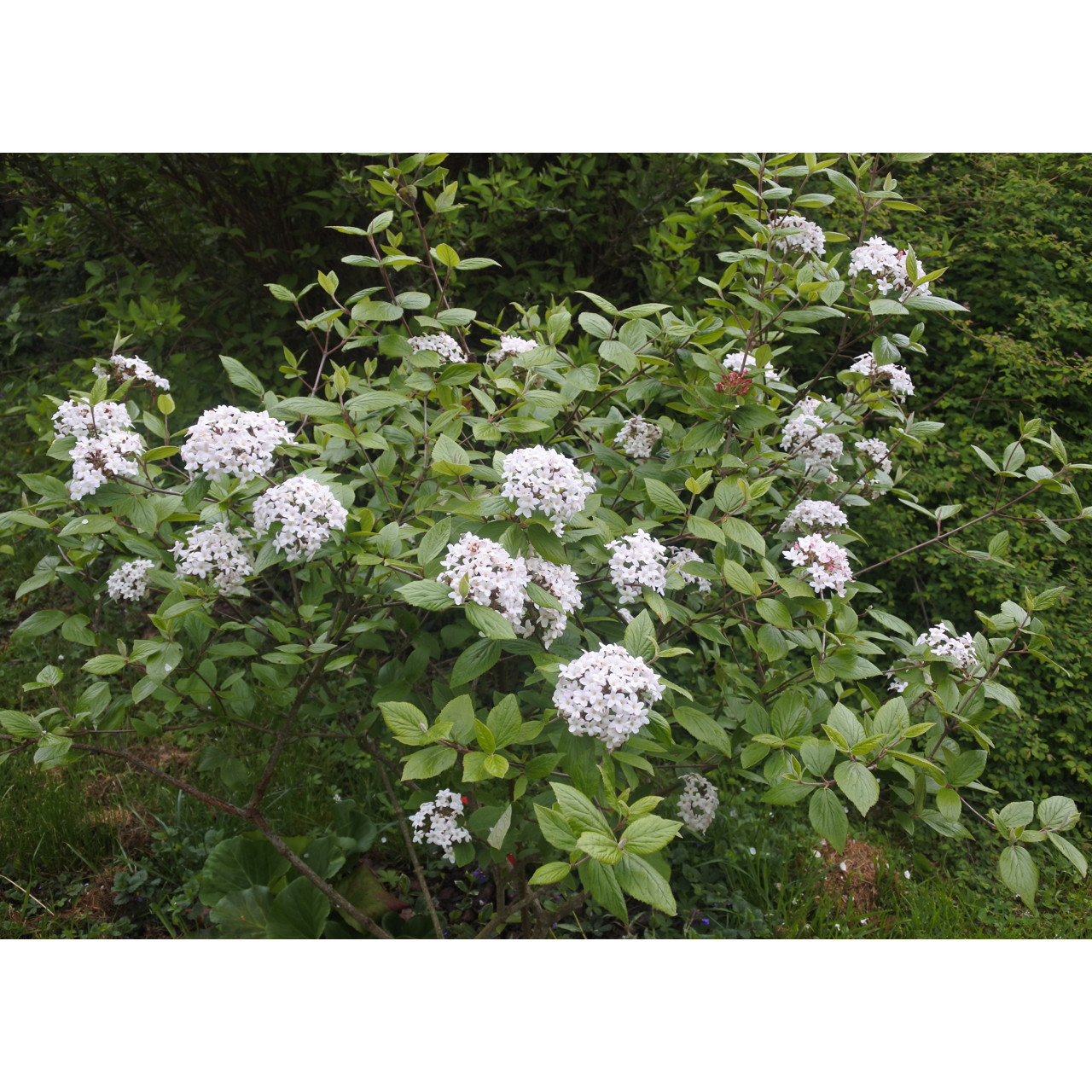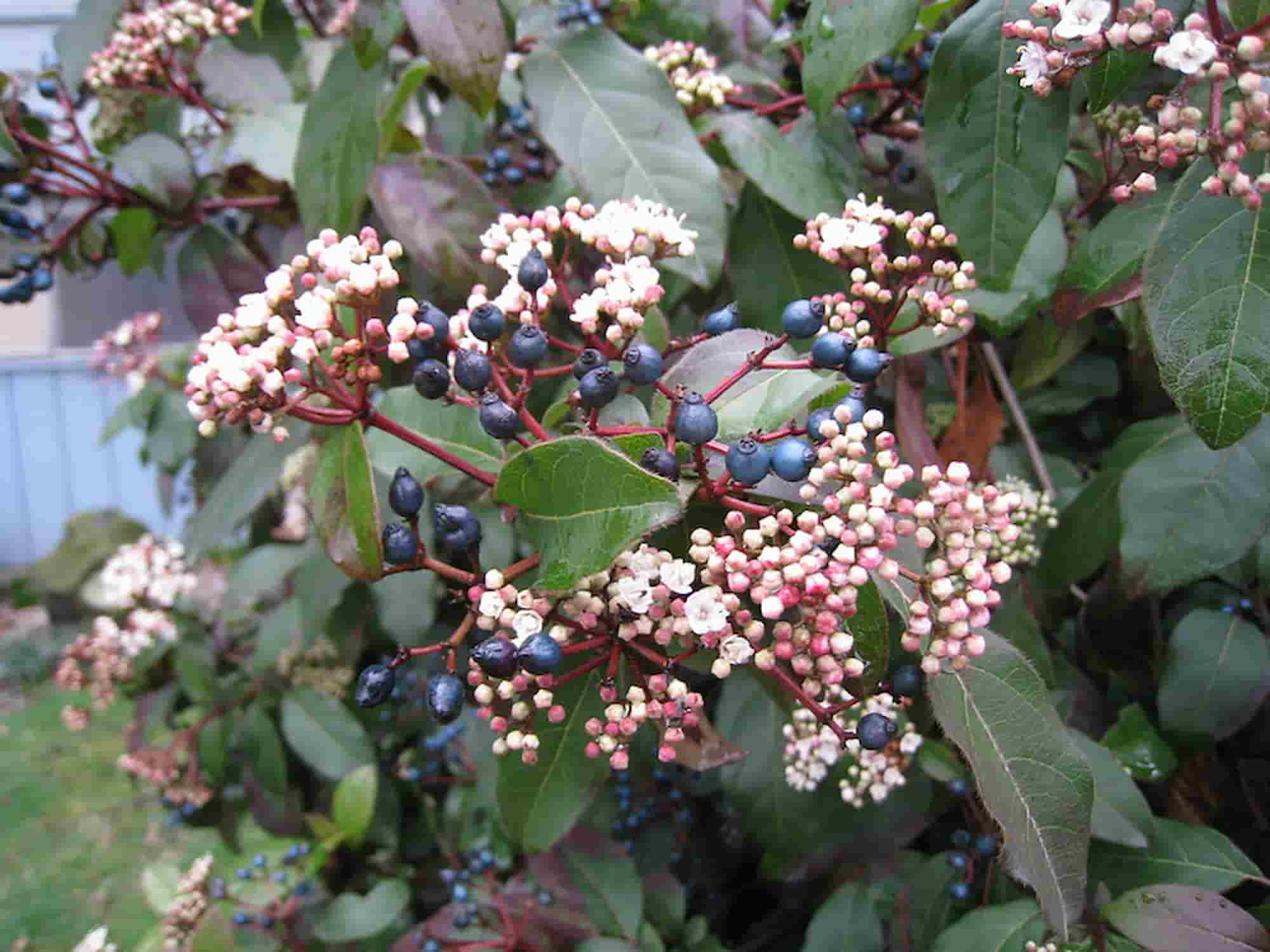

Viburnum burkwoodii Mohawk


Viburnum burkwoodii Mohawk


Viburnum burkwoodii Mohawk


Viburnum burkwoodii Mohawk


Viburnum burkwoodii Mohawk
View more pictures
Hide images

Josefa D.

Viburnum Mohawk in April
Josefa D. • 54 FR
Viburnum burkwoodii Mohawk
Viburnum burkwoodii Mohawk
Viorne de Burkwood
Arriving late and going through some adventures during transportation, we were afraid that this young plant wouldn't survive! Luckily, the buds have blossomed and the flowers have appeared... phew! Now, it is the cold that we need to protect it from as it is still fragile. Thank you to Promesses de Fleurs for communicating with us throughout all the transport and delivery mishaps. Reserving the guarantee for the future!
Véronique, 31/03/2022
Special offer!
Receive a €20 voucher for any order over €90 (excluding delivery costs, credit notes, and plastic-free options)!
1- Add your favorite plants to your cart.
2- Once you have reached €90, confirm your order (you can even choose the delivery date!).
3- As soon as your order is shipped, you will receive an email containing your voucher code, valid for 3 months (90 days).
Your voucher is unique and can only be used once, for any order with a minimum value of €20, excluding delivery costs.
Can be combined with other current offers, non-divisible and non-refundable.
Home or relay delivery (depending on size and destination)
Schedule delivery date,
and select date in basket
This plant carries a 24 months recovery warranty
More information
We guarantee the quality of our plants for a full growing cycle, and will replace at our expense any plant that fails to recover under normal climatic and planting conditions.
Would this plant suit my garden?
Set up your Plantfit profile →
Description
The Viburnum x burkwoodii Mohawk is a variety of Burkwood viburnum selected for its more harmonious habit and more colourful flowering, while retaining the qualities that make this bush one of the most fragrant in spring, and one of the most adaptable to many growing conditions. In the garden, it is an imposing bush that is interesting for its elegant semi-evergreen foliage, autumn colours, and generous white and red spring flowering, which has a scent reminiscent of orange blossom.
The Burkwood viburnum is a cross between Viburnum carlesii and V. utile. It is a bush from the caprifoliaceae family. The 'Mohawk' cultivar is a beautiful American creation dating back to 1959. With a rounded and ramified habit, the bush reaches about 2 m (6 ft 7 in) in all directions when fully grown. Its foliage is semi-evergreen, meaning that some leaves fall off in winter. It consists of entire, wide, shiny, strongly puckered leaves, dark green on the front and gray-green on the back. In autumn, they take on flamboyant shades of coppery orange and red, and those that remain attached to the twigs remain decorative in winter. Flowering takes place from late March to early May depending on the region. Numerous inflorescences in balls, 10 cm (3.9 in) in diameter, form at the ends of the branches. The very bright red flower buds open into small flowers that change from pink to white, but retain a dark red reverse, creating a lovely gradient of colours that is well highlighted against the dark foliage. A fragrance with notes of jasmine and vanilla rises from the flowers in calm weather. Pollinated by bees, the flowers are followed in September-October by spherical fruits that turn from red to black when ripe, extending their ornamental interest into part of the winter. This fruiting attracts and feeds birds.
Hardy down to -20°C, not demanding in terms of soil, the Viburnum x burkwoodii Mohawk can be planted as a standalone specimen to attract attention in small gardens or as a hedge or shrub massif in larger gardens. Its inflorescences can be used for making bouquets. Consider planting it in a high-traffic area, or near the terrace, to fully enjoy its fragrance, under a window or near a door for example. To accompany it, consider other viburnums, or carefree bushes like lilacs, mock oranges, or butterfly bushes, for example.
Viburnum burkwoodii Mohawk in pictures




Plant habit
Flowering
Foliage
Botanical data
Viburnum
burkwoodii
Mohawk
Caprifoliaceae
Viorne de Burkwood
Cultivar or hybrid
Planting and care
Hardy up to -20°C (-4 °F), Viburnum x brukwoodii Mohawk thrives in sunny or partially shaded locations. Plant it in well-prepared soil, any well-loosened garden soil will be suitable. The presence of limestone in the soil is not a problem. At the beginning of its establishment, ensure regular watering (except during freezing periods), especially in summer. Mulch the soil if necessary to save water. Once well established, the bush can fend for itself, except in dry and hot regions where occasional but abundant watering will be welcome in summer.
Planting period
Intended location
Care
Planting & care advice
-
, onOrder confirmed
Reply from on Promesse de fleurs
Haven't found what you were looking for?
Hardiness is the lowest winter temperature a plant can endure without suffering serious damage or even dying. However, hardiness is affected by location (a sheltered area, such as a patio), protection (winter cover) and soil type (hardiness is improved by well-drained soil).

Photo Sharing Terms & Conditions
In order to encourage gardeners to interact and share their experiences, Promesse de fleurs offers various media enabling content to be uploaded onto its Site - in particular via the ‘Photo sharing’ module.
The User agrees to refrain from:
- Posting any content that is illegal, prejudicial, insulting, racist, inciteful to hatred, revisionist, contrary to public decency, that infringes on privacy or on the privacy rights of third parties, in particular the publicity rights of persons and goods, intellectual property rights, or the right to privacy.
- Submitting content on behalf of a third party;
- Impersonate the identity of a third party and/or publish any personal information about a third party;
In general, the User undertakes to refrain from any unethical behaviour.
All Content (in particular text, comments, files, images, photos, videos, creative works, etc.), which may be subject to property or intellectual property rights, image or other private rights, shall remain the property of the User, subject to the limited rights granted by the terms of the licence granted by Promesse de fleurs as stated below. Users are at liberty to publish or not to publish such Content on the Site, notably via the ‘Photo Sharing’ facility, and accept that this Content shall be made public and freely accessible, notably on the Internet.
Users further acknowledge, undertake to have ,and guarantee that they hold all necessary rights and permissions to publish such material on the Site, in particular with regard to the legislation in force pertaining to any privacy, property, intellectual property, image, or contractual rights, or rights of any other nature. By publishing such Content on the Site, Users acknowledge accepting full liability as publishers of the Content within the meaning of the law, and grant Promesse de fleurs, free of charge, an inclusive, worldwide licence for the said Content for the entire duration of its publication, including all reproduction, representation, up/downloading, displaying, performing, transmission, and storage rights.
Users also grant permission for their name to be linked to the Content and accept that this link may not always be made available.
By engaging in posting material, Users consent to their Content becoming automatically accessible on the Internet, in particular on other sites and/or blogs and/or web pages of the Promesse de fleurs site, including in particular social pages and the Promesse de fleurs catalogue.
Users may secure the removal of entrusted content free of charge by issuing a simple request via our contact form.
The flowering period indicated on our website applies to countries and regions located in USDA zone 8 (France, the United Kingdom, Ireland, the Netherlands, etc.)
It will vary according to where you live:
- In zones 9 to 10 (Italy, Spain, Greece, etc.), flowering will occur about 2 to 4 weeks earlier.
- In zones 6 to 7 (Germany, Poland, Slovenia, and lower mountainous regions), flowering will be delayed by 2 to 3 weeks.
- In zone 5 (Central Europe, Scandinavia), blooming will be delayed by 3 to 5 weeks.
In temperate climates, pruning of spring-flowering shrubs (forsythia, spireas, etc.) should be done just after flowering.
Pruning of summer-flowering shrubs (Indian Lilac, Perovskia, etc.) can be done in winter or spring.
In cold regions as well as with frost-sensitive plants, avoid pruning too early when severe frosts may still occur.
The planting period indicated on our website applies to countries and regions located in USDA zone 8 (France, United Kingdom, Ireland, Netherlands).
It will vary according to where you live:
- In Mediterranean zones (Marseille, Madrid, Milan, etc.), autumn and winter are the best planting periods.
- In continental zones (Strasbourg, Munich, Vienna, etc.), delay planting by 2 to 3 weeks in spring and bring it forward by 2 to 4 weeks in autumn.
- In mountainous regions (the Alps, Pyrenees, Carpathians, etc.), it is best to plant in late spring (May-June) or late summer (August-September).
The harvesting period indicated on our website applies to countries and regions in USDA zone 8 (France, England, Ireland, the Netherlands).
In colder areas (Scandinavia, Poland, Austria...) fruit and vegetable harvests are likely to be delayed by 3-4 weeks.
In warmer areas (Italy, Spain, Greece, etc.), harvesting will probably take place earlier, depending on weather conditions.
The sowing periods indicated on our website apply to countries and regions within USDA Zone 8 (France, UK, Ireland, Netherlands).
In colder areas (Scandinavia, Poland, Austria...), delay any outdoor sowing by 3-4 weeks, or sow under glass.
In warmer climes (Italy, Spain, Greece, etc.), bring outdoor sowing forward by a few weeks.









































